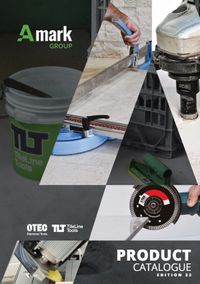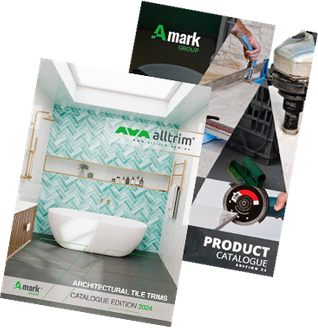Common Tile Installation Mistakes and How to Avoid Them
Even the most experienced professionals can make mistakes when dealing with challenging installation projects. Many tile installation mistakes are caused by an inaccurate wall or floor layout analysis, poor preparation and the lack of the right tiling equipment.
Here we look at some of the most common tiling mistakes and how to avoid them:
Loose or Cracked Tiles
Before starting the tile installation, check any loose tiles from the substrate. An existing tile in good condition can have another tile installed on top. If a tile is gently hit with a tool, a hollow sound indicates that the tile does not adhere properly or it is caused by the type of substrate used.
Cracked tiles may be caused by an impact from an object that fell on top of the tile, or the tiles are located mid-span between joists. The maximum deflection allowed needs to be in the range of 1/360th of the span length.
You can easily remove tiles with basic hand tools like hammers and chisels.
Lack of Expansion and Contraction
Improper joints, especially against adjacent surfaces or materials can cause the tiles to pop into the air and the tiles will expand and contract. You need to leave half an inch in between the previous line of tiles and the newly installed surface to allow both layers to expand and contract properly. You can use movement joints to align tiles properly and tile spacers to create even spaces between tiles.
Lack of Cleaning
Installing tiles over dust, debris and other substances left on the surface can weaken the bond between the adhesive and the new surface. This can easily be resolved by vacuuming the dust and debris particles and cleaning the surface with water.
Improper Underlayment
An underlayment should be placed over a mortar bed. The mortar bed fills voids and creates a manageable surface. You can level the surface using a grinder, sander or tile levelling systems.
Improper Adhesive
The adhesive must be applied thoroughly underneath the tile to create an even layer. On residential installations, the tiles must adhere to 80 per cent of the contact surface. On commercial installations, the tiles must adhere to 95 per cent of the contact surface. It is important to identify which sealers and silicone suit the right materials.
Improper Grout
The measurement of water determines the dryness and wetness when mixing grout. Grout manufacturers use different materials that cause changes in grout colour. It is important to identify what effects certain grout colouring can have on the finished surface.
Review the common tile installation mistakes and avoid them by using proper materials and tile tools.
Avoid making tile installation mistakes, talk to the experts
Amark Group is a trusted supplier of tiling equipment and tools. The company is an Australia owned and operated family business. We deliver a comprehensive range of high-quality tiling products to architects, builders and contractors across the country. We are an expanding tiling product wholesaler, providing our partners and their customers competitively priced deals from reputable manufacturers.
Register with us and place your order now.












